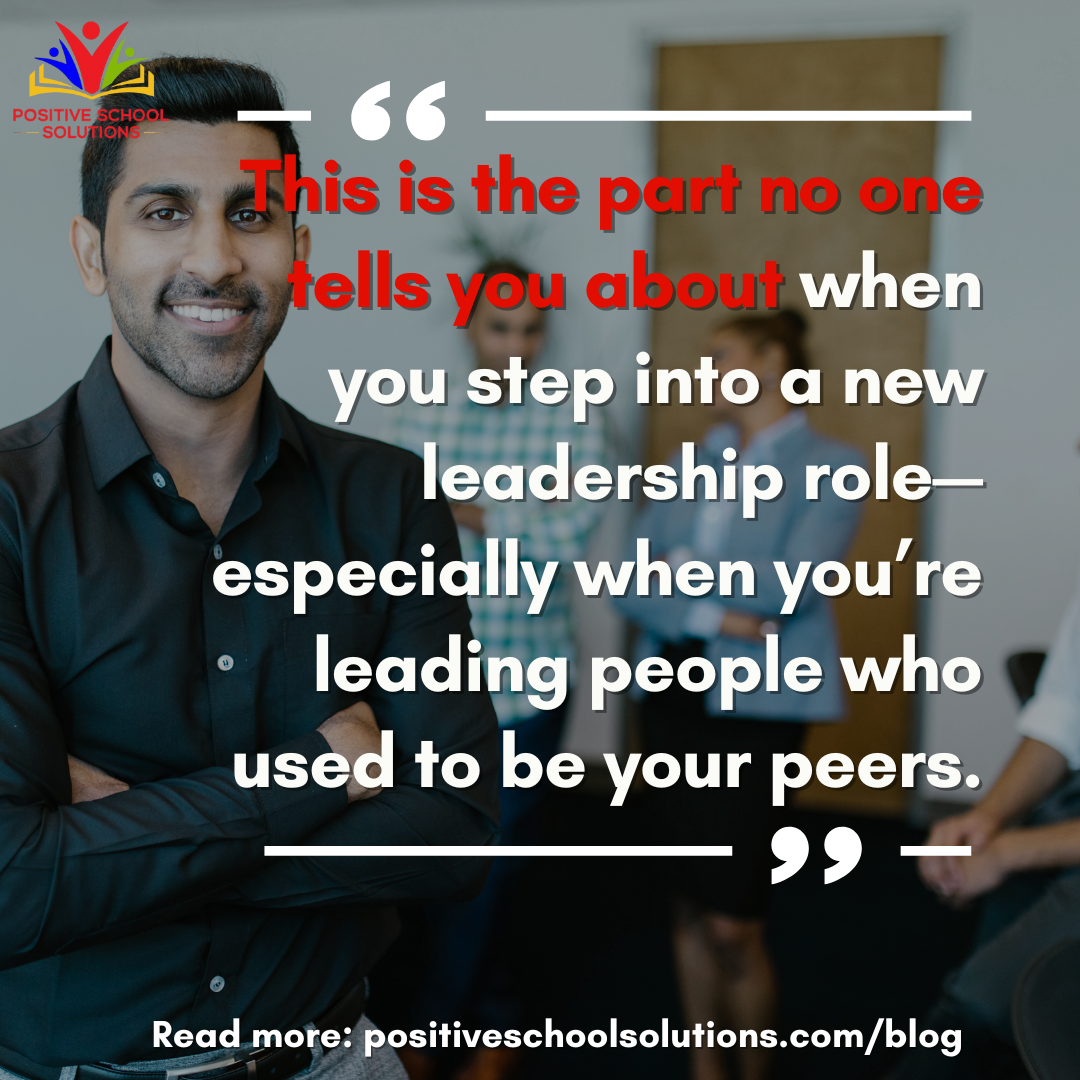What Nobody Tells You About the Peer-to-Principal (or Coach) Shift—And How to Handle It with Grace
I was on a coaching call not long ago with a newly appointed assistant principal—someone who had spent years as a teacher in the very building she now helped lead.
 She had all the right instincts.
She had all the right instincts.
She was thoughtful. Vision-driven. Respected.
But the moment she started describing her staff meeting that morning, her energy shifted.
“It’s weird,” she said. “Some people act like nothing’s changed—like I’m still their hallway buddy. Others are suddenly formal with me, like I’m the boss now. And then there are a couple who barely look at me. I feel like I don’t know how to act with anyone anymore.”
And I nodded, because yep. This is the part no one tells you about when you step into a new leadership role—especially when you’re leading people who used to be your peers.
The feelings are real:
- That sudden awkwardness in the staff room.
- The over-sharing that keeps happening with one colleague who hasn’t made the shift.
- The tension with another who clearly doesn’t think you should have gotten the role in the first place.
And on top of all that? You’re trying to lead well. To serve. To be credible and confident and kind… and honestly? It’s exhausting.
This is the moment that makes or breaks new leaders.
Because it’s not just a new job—it’s a new identity.
And you’re stepping into it in front of people who already knew you as someone else.
That transition is one of the most emotionally layered and professionally tricky parts of becoming a coach or administrator—yet it rarely gets talked about.
Most leadership programs will teach you how to write a vision statement, conduct a walkthrough, or plan a PD day. But they don’t teach you how to re-establish trust and clarity with former peers.
They don’t teach you how to walk into your new role and say,
“Yes, I’ve changed roles—and I still want to lead with connection.”
Here’s One Small Shift That Makes A Big Impact
You don’t need to have it all figured out. You don’t need to avoid eye contact or suddenly become stiff and formal.
But you do need to acknowledge the shift.
Especially with the people you were closest to before the change.
This doesn’t mean sitting everyone down and making a grand speech.
It simply means having a moment of honest, graceful leadership—and owning the transition with humility.
This is one of the strategies we teach in our Shifting from Peer to Coach masterclass. It’s part of a larger framework, but I want to share a small piece with you here because it’s something you can try right away. We call it Own Your Position with Humility.
That means recognizing your past relationship while confidently stepping into who you are now.
Here are a few phrases to keep in your pocket:
- “I’ve always valued our work together as colleagues, and I’m excited to support you in new ways.”
- “This is a shift for both of us, and I appreciate your openness as we figure it out together.”
- “I know this may feel different, and that’s okay. I want you to know that I’m here to listen, support, and help you grow.”
These statements may seem simple—but they carry so much power.
They show self-awareness.
They disarm defensiveness.
They let the other person know: I see you. I still respect you. And I’m stepping into this new role with integrity.
Try This One Step This Week
If this resonates with you, here’s a small challenge – think of one person you haven’t yet had this kind of conversation with.
Someone who might be unsure about how to interact with you now.
Then write down one sentence you could use to open up that dialogue.
It doesn’t have to be perfect.
It just has to be real.
Want The Full Roadmap?
This is just one piece of the bigger picture.
If this is the kind of leadership work you wish you’d gotten more of when you stepped into your role—You’re not alone.
And you don’t have to figure it all out on your own.
If you’re ready to go deeper, join the Shifting from Peer to Coach masterclass to get the full RE-CONNECT framework, including boundary-setting, trust-building, and navigating resistance.
Or explore the full Culture-Shaping Leadership path—designed to help leaders like you build strong relationships, lead with confidence, and create a culture that lasts.
You’re already doing the hard part—showing up.
Let’s make sure you have the tools that help you lead with purpose, grace, and authenticity!
Written by Sarah Fillion 2025


